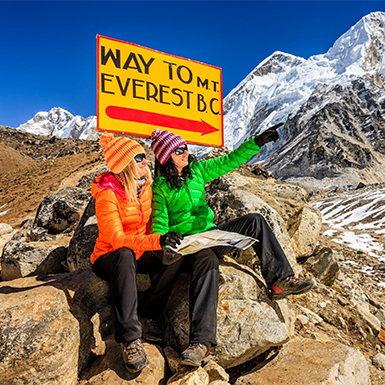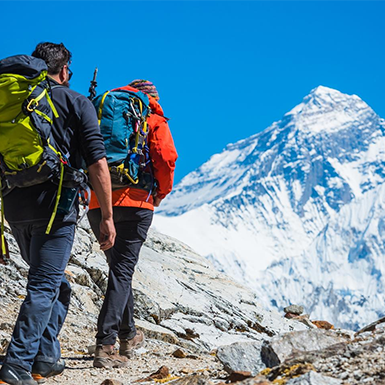Lukla to Everest Base Camp: 11 Days Best Trek Itinerary
- Thursday December 15, 2022
- 0
Peregrine Treks and Tours invite you to the trekking journey from Lukla to Everest Base Camp. Trek from Lukla to Everest Base Camp is an opportunity for every trekker to plunge into the mysterious world of gigantic mountains belonging to the Himalayas. The Everest Base Camp is 5364 m, a tent city on a glacier.
During the Lukla to Everest Base Camp Trek, you will visit the national villages of the legendary Sherpas and ancient Nepalese monasteries, climb to the top of Kala Patthar (5644 m), and of course, see with your own eyes the Everest base camp.
The majestic Himalayan panoramas and emotions from the hike will remain with you forever. You can take photos from Kalapatthar – the highest point of your trekking. In addition, you will visit the Everest Base Camp and possibly see Everest at sunset.
Why Peregrine Treks and Tours?
- We have been providing the trek and tour service since 2002.
- We have experienced guides and a professional team.
- We will pass part of the trekking away from the crowds of tourists.
- We have organized thoughtful acclimatization with rest days.
- We will visit Kala Patthar and Everest Base Camp.
- You do not need to overpay for any services.
- We will arrange panoramic and comfortable lodges for your accommodation.
- We have competent staffs that will support you at all stages of preparation.
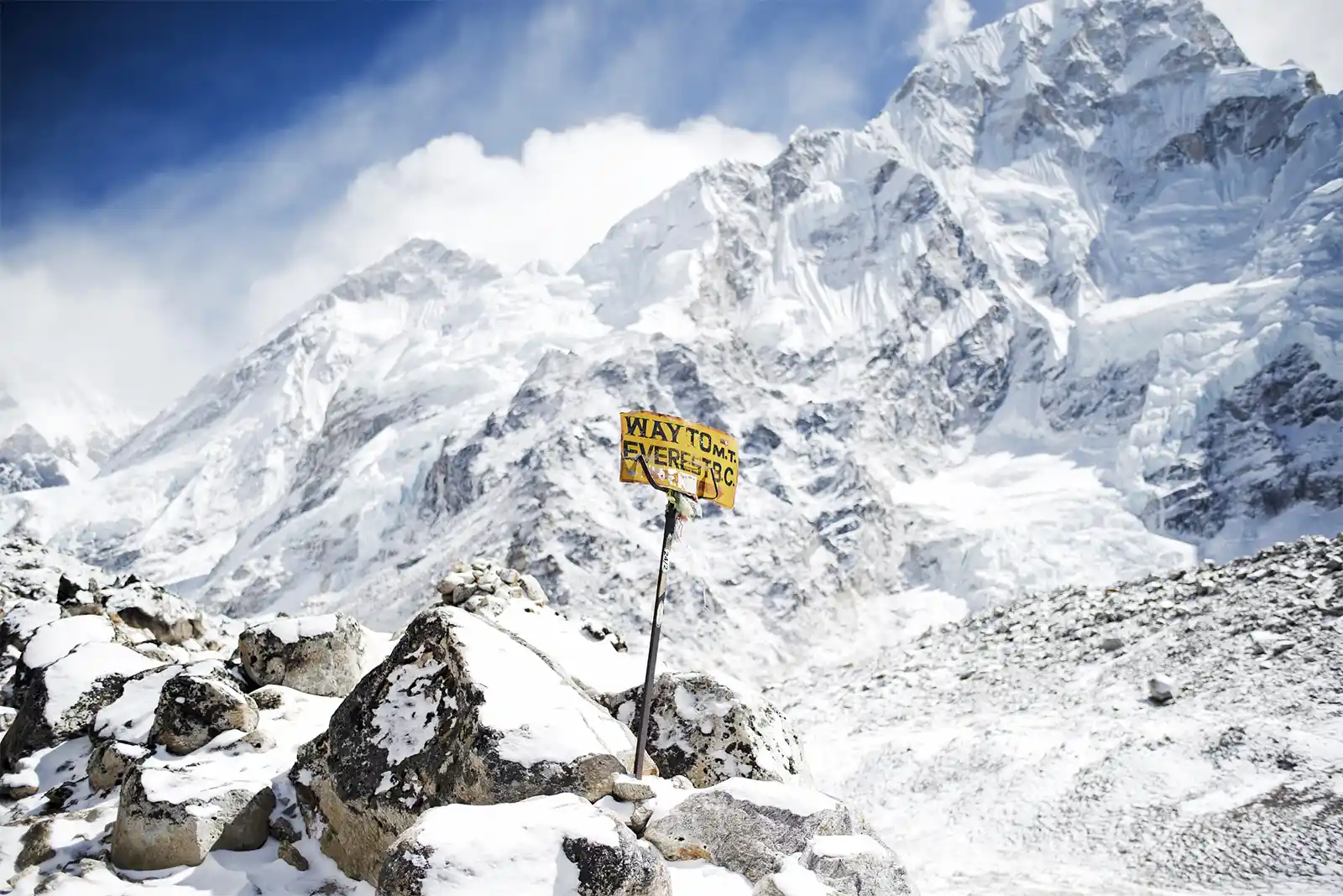
A typical day during Lukla to Everest Base Camp
The trek from Lukla to Everest Base Camp can take 10 to 15 days. The days ahead and the climate depend on the season you choose to visit the site. Regardless of the time, you will enjoy your hike to numerous Sherpa villages. Each has a shop, a canteen, and sometimes even a coffee shop with pastries and an Irish pub.
Your trail will gain or drop height again since the trails never go straight. The route is built so you can walk moderately for 6-8 hours daily. While going up, do not get carried away with increasing your appetite; otherwise, the risk of going down ahead of time increases significantly.
Perhaps on the way, you will meet other teams and trekkers. Share your bounty with others if you want to become everyone’s favorite.
Lukla to Everest Base Camp Trek Difficulty
The journey from Lukla to Everest Base Camp is not technically tricky; however, optimum physical and mental health is recommended. During the trip, you will overcome the route of 110 kilometers. You will go 4-7 hours daily (10-15 km and, in the last days, more than 20 km downhill). Some days are reserved for rest, acclimatization, and acquaintance with the surroundings.
There are no steep rock climbs on the route, but you must be prepared to climb up to 500 m per day along long rocky paths. Besides, the sun is very bright in the mountains; on the contrary, it is cold in the evening.
The main difficulty of the track is hypoxia, which the body begins to experience at altitudes above 3000 m. Lack of oxygen, in the form of altitude sickness, often manifests at an altitude of 4500 m and above.
As your support team, we will closely monitor our members’ condition. We will regulate the pace and load during the day. Likewise, we will recommend a particular group of drugs in acclimatization to reduce the risk of getting sick to a minimum.
Required Permits and how to obtain
Mount Everest is situated within the territory of Sagarmatha National Park; therefore, trekkers should obtain two permits to enter the area:
Khumbu Rural Municipality Permit
Khumbu region depends on tourism for their livelihood; therefore, all tourists, including those from SAARC nations, should obtain this permit. You can obtain this permit in Lukla or Monjo. All foreign nationals must pay NPR 2000 per person for the first four weeks. After four weeks, the authority charges NPR 2500 per person. It would help if you had your passport for receiving this permit.
Permit for Sagarmatha National Park Entry
Sagarmatha National Park is a restricted area that requires a special permit. The entry permit to the park can be received either from the Nepal Tourism Board office in Kathmandu or from the park itself at its entrance gate.
The park charges NPR 3000 per person for foreign nationals. SAARC nationals can pay half the price, while Nepalese residents have to pay only NPR 100.
Children under ten years of age can enter the area free of cost.
Best time to trek Lukla to Everest Base Camp
The optimal time to trek from Lukla to Everest Base Camp is spring (from the end of March to mid-May) and autumn (from October to the end of November). The average daytime temperature during these seasons ranges around 25 degrees, with a nighttime temperature of 10 degrees.
The track is impossible in summer (end of June and July) due to constant rains and the monsoon season. In winter (December to February), the mountains are pretty cold and windy, although almost all days are sunny.
However, many tourists prefer to view Everest in December to celebrate Christmas and New Year. It is possible to trek in winter, but you need to be prepared because it will be pretty cold in your accommodation, and the opportunity to warm up will be only in the evening by the stove in the kitchen. However, you can sometimes walk in a T-shirt during the day in the sun.
Lukla to Everest Base Camp Trek Itinerary
Day 01: Lukla to Phakding
From Lukla, you will begin your real adventure from Lukla to Everest Base Camp. Today’s destination is the small village of Phakding, which lies 7.5 km from Lukla. Approximately 4 hours of the hike will take you to this village, where you will stay for a night at Buddha lodge, one of the best lodges in Phakding.
The road will pass through the villages and farms of the local Sherpa people. On a suspension bridge, you will cross the Thadokhola River, from which you will observe a magnificent view of Kusum Kangura (6367 m). If lucky, you can see musk deer running along the steep rocks.
Day 2: Phakding to Namche
After the first night in the mountains, prepare to begin your ascent. Today, prepare to see the ancient yet modern Namche Bazaar, the trade center of Sherpas. Today you will cover the distance of 10 km within 6 to 7 hours of hike.
The trail to Namche Bazaar goes along a beautiful canyon, which you will now and then cross over numerous suspension bridges. Having passed half the path planned for today, you will see the first snowy peak – Thamserku.
You will cross another suspension bridge, and the path will go up sharply. And now you can see the Namche Bazaar ahead – the only city on the track, while the remaining villages usually show only a few lodges. There is a post office, a market, a hospital, and even an Irish pub.
There are multiple lodges available for you to choose your accommodation. Panorama Lodge, Nirvana Home, and Himalayan lodge, to name a few.
After accommodating in a hotel, you can walk around the city with time and energy.
Day 3: Namche Acclimatization
The city itself lies at the height of 3440 m above sea level and around ice peaks. It is a semicircle; from anywhere in the city, you can see another part of it. There are also many good cafes in Namche Bazaar, so don’t just sit and drink but walk around the neighborhood to get the best acclimatization.
By climbing to a height of 4000 meters, you will reach a memorial dedicated to the family of Edmund Hillary, offering stunning views of the surrounding peaks, including Everest and Ama Dablam.
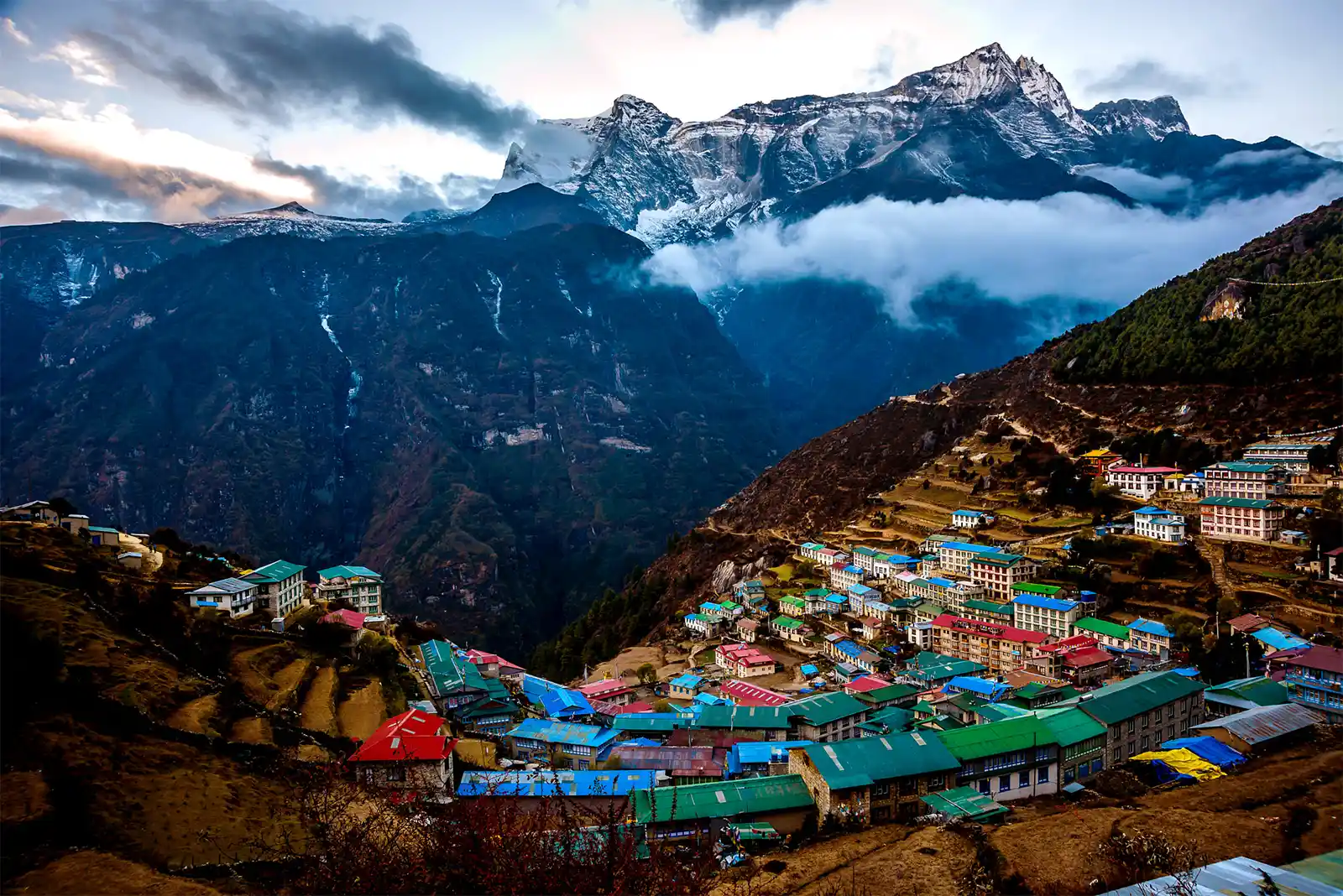
Day 4: Namche to Tengboche
Another morning in Namche Bazaar, you will leave this wonderful place today. You will go out onto the path that stretches along a half-kilometer cliff and see the handsome Ama-Dablam ahead in half an hour.
After 4 hour hike, you will reach Tengboche (3930 m) and stay at hotel Himalayan. Since you have plenty of time, you can visit the famous Tengboche monastery. You can learn the unique history of this place, visit the service, and those who wish can get an audience with the Lama. In this temple, the blessing ceremony occurs for climbers who go to the top of the world.
Day 5: Tengboche to Dingboche
Your goal today will be to reach Dingboche existing at 4410 m, right at the foot of the majestic Ama Dablam. Today, you will cover a distance of 10.5 km with approximately 6 hours of walking.
If you feel dizziness, nausea, fatigue, drowsiness, or a mild headache, don’t get alarmed; all these are entirely normal. As you continue your journey, you will learn to listen to your body and cope with the miner as efficiently as possible.
Along the way, you will admire the six-thousand-meter Thamserku and Ama Dablam, which has already changed its shape and turned into a giant pyramid.
Overnight stay at Moonlight lodge in Dingboche.
Day 6: Dingboche Rest
You will spend the entire day today resting and preparing your body to ascent ad exceed the mark of 5000 m the following days.
Dingboche is the optimal resting spot for this purpose. Locals have built fences of stones to prevent their farms from wild animals.
Here begins the valley of the alpine tundra, with no trees.
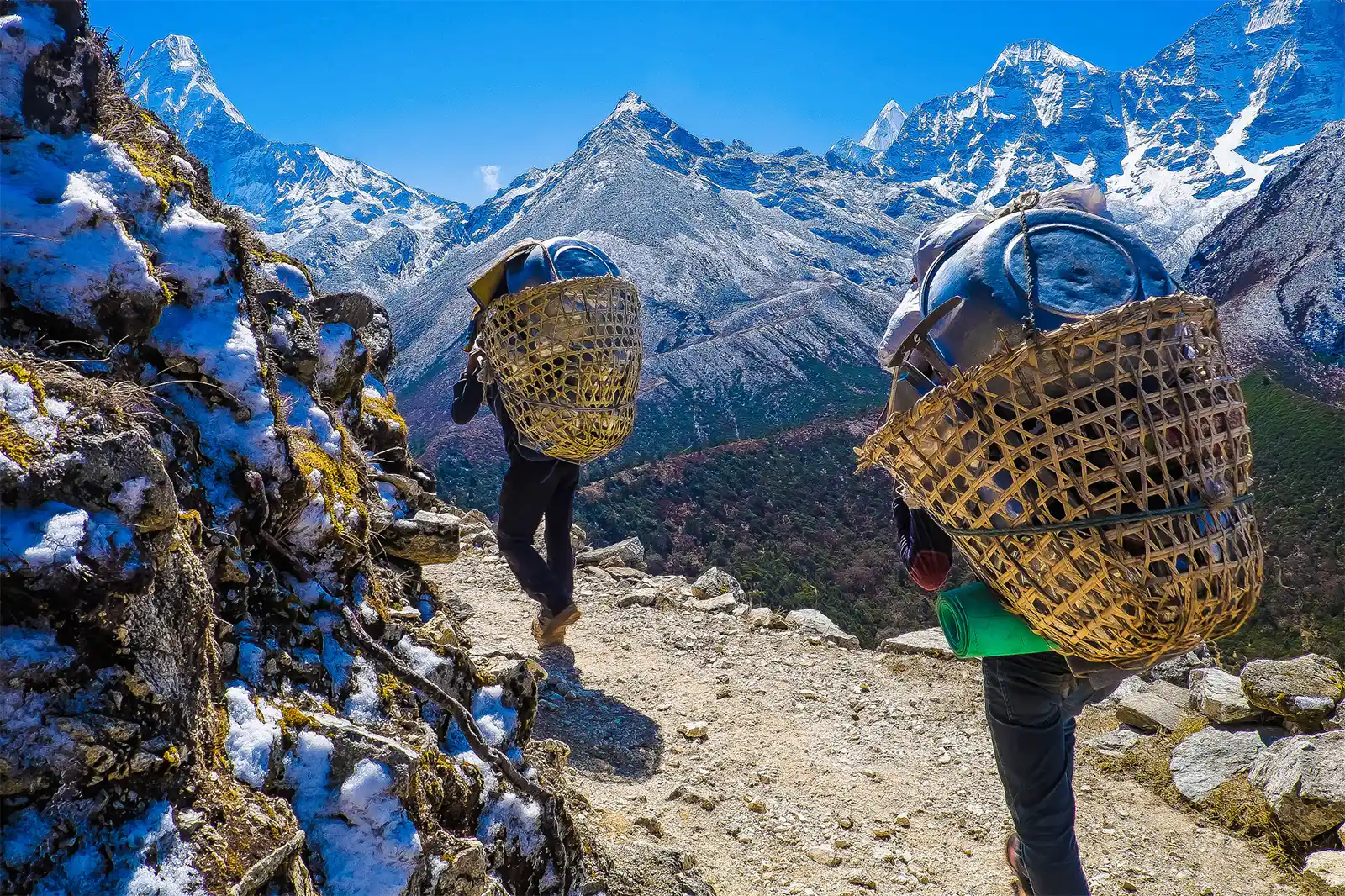
Day 7: Dingboche to Lobuche
After much-needed rest, you will embark on your journey to Lobuche, 9 km from Dingboche. Within 5 hours of waking, you will reach the Lobuche village, where you can admire the colossal scale of the glacier and stay overnight at Himalayan Eco Resort.
The route runs through the Phalung Karpo valley at an altitude of 4340 meters. There are several seasonal huts among the harsh and majestic rocks and breathtaking panoramas of the Ama Dablam Mountains.
Day 8: Lobuche to EBC to Gorakshep
This day is marked with reaching your destination Everest Base Camp. The early morning trek from Lobuche will take you to Gorakshep within 1 to 2 hours, the distance being merely 4.5 km.
The views around change and the sharp peak of Nuptse (7861 m) open up to your eyes. The trail here is no longer as well-trodden as in previous days, and you must carefully look under your feet.
After lunch, you will go to the base camp of Everest. This is the holy of holies of mountaineering.
The distance from Gorakshep to Everest Base camp is 3.5 km, which you can cross within 2 hours of hiking. From Everest Base Camp, you can also admire the scale of the Khumbu icefall and absorb its unique aura and energy. Enjoy the grandeur of Everest that will remain with you as long as you live.
You will return to Gorakshep, have dinner, and rest at Buddha lodge.
Day 9: Hike to Kala Patthar and back to Pheriche
This day is marked by the climbing of the summit of the Kala Patthar (black stone of Nepal) that smiles at the height of 5644 m. Contrary to your expectations, this day will be easy, as climbing Kala Patthar is not so difficult.
Covering a distance of 1.3 km within 2 hours, you will reach the top of Kala Patthar, where you can have a stunning view of the entire Himalayan range. Here is the highest point of the route.
From the top of Kala Patthar, Everest appears before you in all its grandeur. And now the setting sun gradually repaints the highest mountain in the world in a blood-red color.
It would help if you hurried down before it gets too dark, as you have to return to Pheriche. You have to hike 10 km for 5 to 6 hours to reach Pheriche, where you will stay overnight at Everest Inn.
Day 10: Pheriche to Namche
After long days of ascent, it is time to return to the valley of civilization, Namche Bazaar. Today, you have to cover a distance of 18 km, so get ready to walk for 6 to 7 hours. However, you do not have to rush and enjoy your walk slowly.
The landscape will change slowly to lavish greenery; perhaps, on the way, you will meet groups that have yet to conquer Everest Base Camp.
Day 11: Namche to Lukla
Today you need to reach Lukla crossing a distance of 18 km. The crossing takes 6-8 hours, but with stops, it can take the whole day. You will take a leisurely trek to Lukla, where you can view the lush green scenery surrounding the Sherpa villages.
